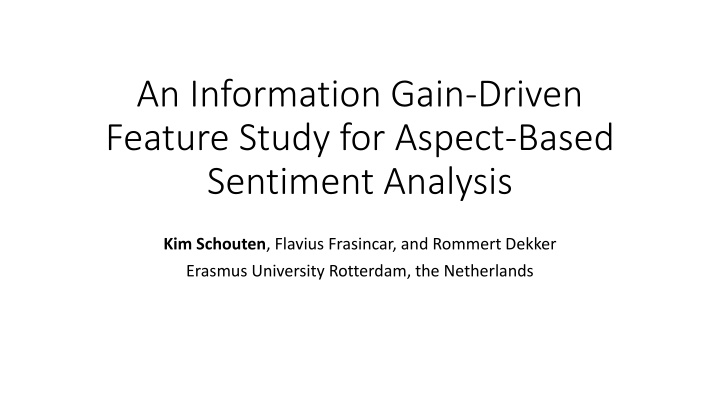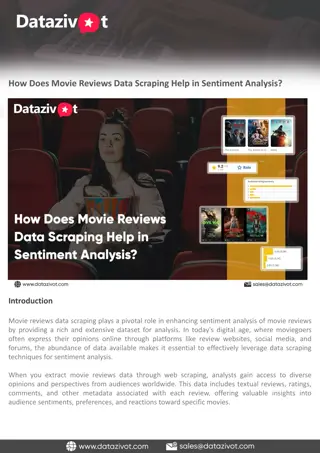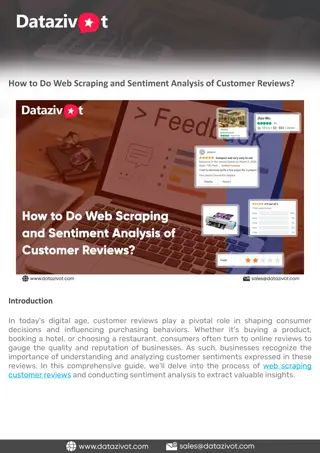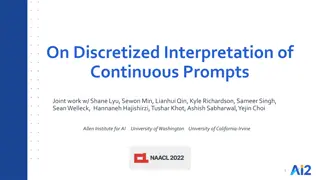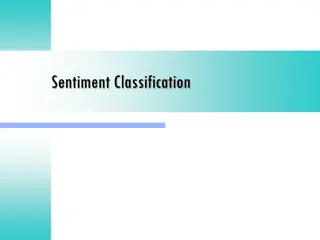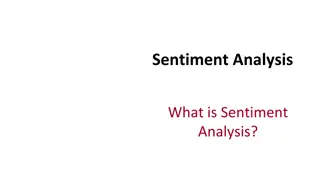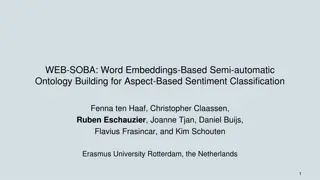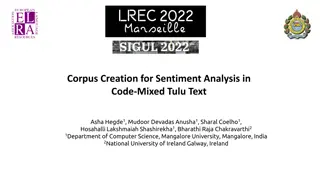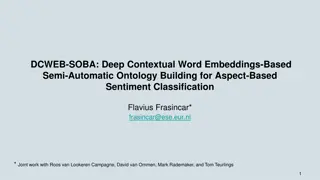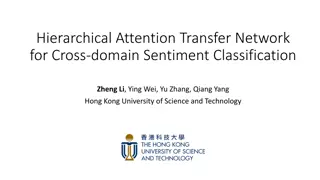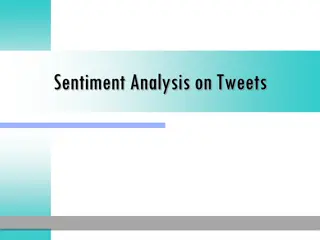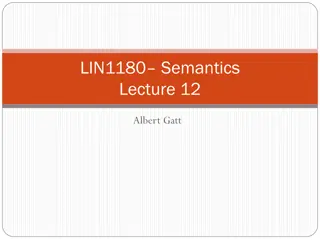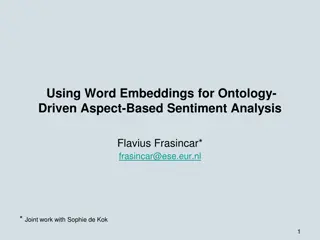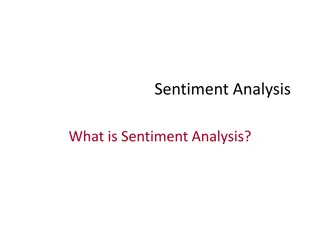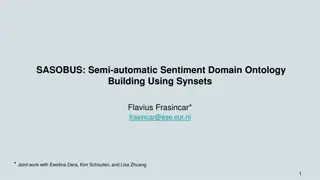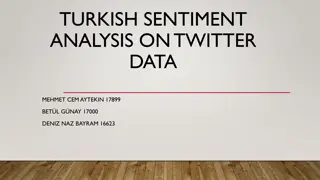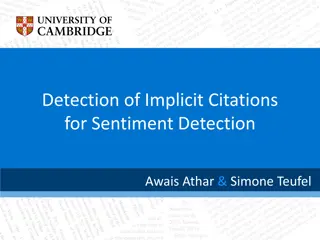Aspect-Based Sentiment Analysis Study
Aspect-Based Sentiment Analysis is a key area in natural language processing, focusing on extracting sentiment at a granular aspect level, such as specific features of products or services. This study delves into feature selection using Information Gain, highlighting the importance of identifying relevant aspects for sentiment classification. Through a detailed process involving NLP pipelines and machine learning techniques like linear SVM, the research aims to enhance sentiment analysis accuracy and performance for consumer reviews.
Download Presentation

Please find below an Image/Link to download the presentation.
The content on the website is provided AS IS for your information and personal use only. It may not be sold, licensed, or shared on other websites without obtaining consent from the author.If you encounter any issues during the download, it is possible that the publisher has removed the file from their server.
You are allowed to download the files provided on this website for personal or commercial use, subject to the condition that they are used lawfully. All files are the property of their respective owners.
The content on the website is provided AS IS for your information and personal use only. It may not be sold, licensed, or shared on other websites without obtaining consent from the author.
E N D
Presentation Transcript
An Information Gain-Driven Feature Study for Aspect-Based Sentiment Analysis Kim Schouten, Flavius Frasincar, and Rommert Dekker Erasmus University Rotterdam, the Netherlands
Many opinions Many opinions Nowadays the Web is filled with opinion and sentiment People freely share their thoughts on basically everything Useful, but lot of noise Need automatic methods to sift through this much data Our scope is consumer reviews
Sentiment Analysis Sentiment Analysis Sentiment Analysis -> extract sentiment from text Sentiment can be defined as polarity (positive/negative) Or as something more complex (numeric scale or set of emotions) Useful for consumers to know what other people think Useful for producers to gauge public opinion w.r.t. their product
Aspect Aspect- -Based Sentiment Analysis Based Sentiment Analysis Sentiment Analysis has a scope, for instance a document More interesting however is the aspect level An aspect is a characteristic or feature of a product or service being reviewed This can range from general things like price and size of a product, to very specific aspects like wine selection for restaurants or battery life for laptops
Data snippet Data snippet
Currently Currently Mostly supervised machine learning algorithms Focus on performance Feature overload But which features are actually useful?
Setup Setup NLP Pipeline to extract linguistic features Compute Information Gain (IG) for each feature Order features by descending IG Run a linear SVM to classify sentiment for each aspect Incrementally add features from ordered list and record performance All of this with ten-fold cross-validation 7 folds for training the SVM 2 folds for determining parameters (aspect context, and the SVM C param) 1 fold for testing
NLP Pipeline NLP Pipeline Spelling Correction Tokenization Part-of-Speech Tagging Lemmatization Sentence Splitting Word Sense Disambiguation JLanguageTool Stanford CoreNLP Lesk implementation Syntactic Analysis
Information Gain Information Gain Each binary feature splits the data in two How much easier is it to choose the correct class given this split?
Information Gain Information Gain Compute entropy, or impurity, of data Then Information Gain is the decrease in entropy after split
Features Features Word-based features Lemma Negation present Synset-based features Synset Related-synsets Grammar-based features Lemma-grammar POS-grammar Synset-grammar Polarity-grammar Aspect feature Category (of aspect) ok#JJ#1 Similar To big#JJ#1 keep-nsubj-we VB-nsubj-PRP ok#JJ#1-cop-be#VB#1 neutral-nsubj-neutral FOOD#QUALITY
Data Data Sentiment Number of aspects % of aspects Positive 1652 66.1% Neutral 98 3.9% Negative 749 30% Total 2499 100% Type Number of aspects % of aspects Explicit 1879 75.2% Implicit 620 24.8% Total 2499 100%
Results Results features ordered by descending IG features ordered by descending IG
Results Results average IG per feature type average IG per feature type
Results Results sentiment classification results sentiment classification results
Overfitting Overfitting with low IG scores with low IG scores
Results Results average IG average IG
Results Results proportion of feature type proportion of feature type
Results Results top 3 features per type top 3 features per type
Conclusions Conclusions Using Information Gain to select features: We can use just 1% of the features at only a 2.9% penalty in accuracy And with 1% of the features, training time of the SVM is reduced by 80% Relatively unknown features such as related-synsets and polarity- grammar turned out to be effective for sentiment classification In future work we hope to Compare the grammar-based features with the traditional n-grams Include more features, e.g., multiple sentiment lexicons Investigate feature interaction Incorporate a smarter aspect context instead of the simple word window
